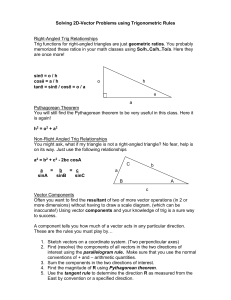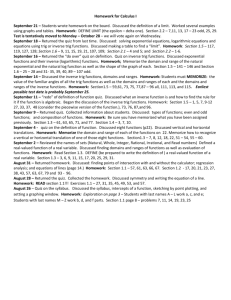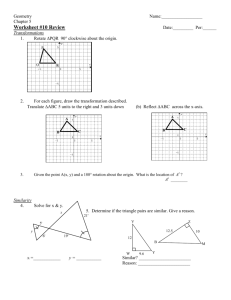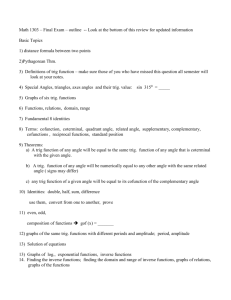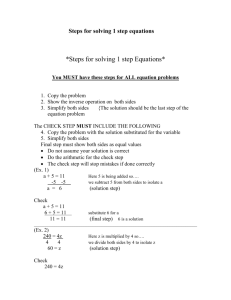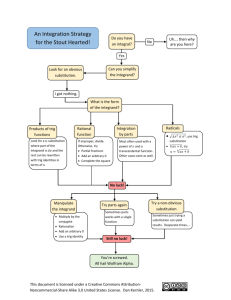ADVANCED MATH “I Can…” Statements Complex Numbers I can
advertisement
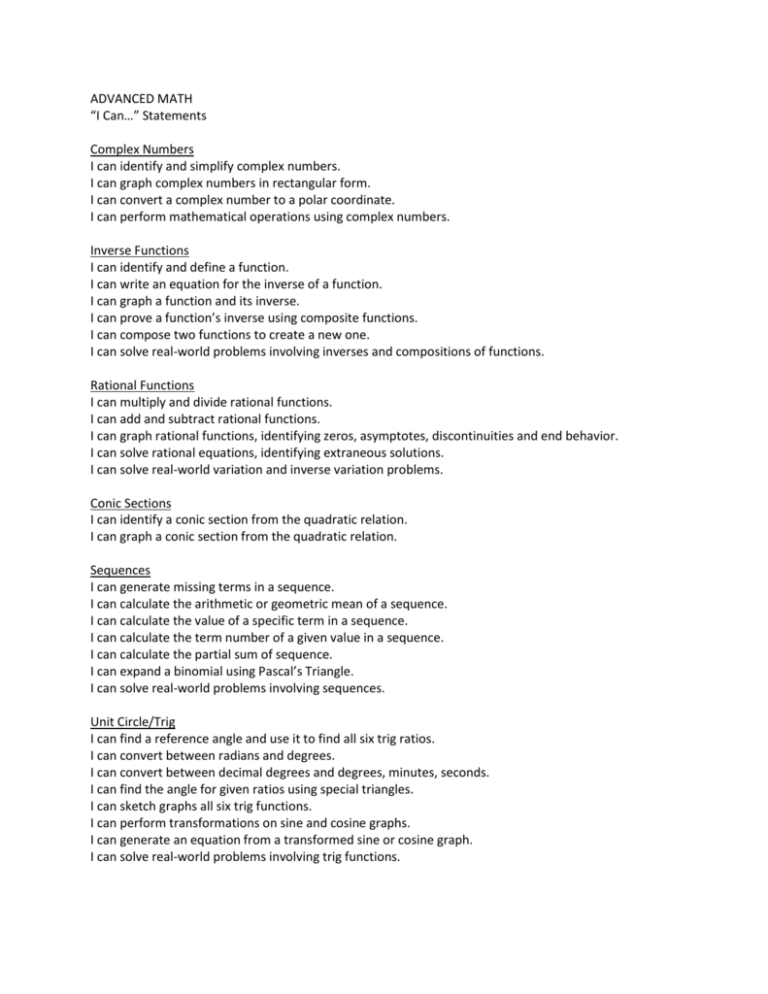
ADVANCED MATH “I Can…” Statements Complex Numbers I can identify and simplify complex numbers. I can graph complex numbers in rectangular form. I can convert a complex number to a polar coordinate. I can perform mathematical operations using complex numbers. Inverse Functions I can identify and define a function. I can write an equation for the inverse of a function. I can graph a function and its inverse. I can prove a function’s inverse using composite functions. I can compose two functions to create a new one. I can solve real-world problems involving inverses and compositions of functions. Rational Functions I can multiply and divide rational functions. I can add and subtract rational functions. I can graph rational functions, identifying zeros, asymptotes, discontinuities and end behavior. I can solve rational equations, identifying extraneous solutions. I can solve real-world variation and inverse variation problems. Conic Sections I can identify a conic section from the quadratic relation. I can graph a conic section from the quadratic relation. Sequences I can generate missing terms in a sequence. I can calculate the arithmetic or geometric mean of a sequence. I can calculate the value of a specific term in a sequence. I can calculate the term number of a given value in a sequence. I can calculate the partial sum of sequence. I can expand a binomial using Pascal’s Triangle. I can solve real-world problems involving sequences. Unit Circle/Trig I can find a reference angle and use it to find all six trig ratios. I can convert between radians and degrees. I can convert between decimal degrees and degrees, minutes, seconds. I can find the angle for given ratios using special triangles. I can sketch graphs all six trig functions. I can perform transformations on sine and cosine graphs. I can generate an equation from a transformed sine or cosine graph. I can solve real-world problems involving trig functions. Trig Identities I can prove trig identities. I can identify even and odd trig functions. I can calculate half and double angles. I can solve trig equations using the trig identities. Triangles and Vectors I can solve real-world, right triangle problems using trig and inverse trig functions. I can solve oblique triangle problems using Law of Cosines and Law of Sines. I can derive the formula for the area of a triangle and evaluate area problems. I can solve area problems using Hero’s formula. I can calculate all possible values for the missing side and angles of a SAS triangle. I can represent vector qualities using directed line segments. I can add and subtract vectors geometrically. I can add and subtract vectors in component form. I can multiply vectors geometrically. I can multiply vectors in component form. I can real-world problems involving bearing and velocity using vectors. Probability I can calculate the number of outcomes for an event. I can calculate probabilities using permutations and combinations. I can determine if an event is mutually exclusive or not and calculate the probability for these events. I can determine if an event is dependent or independent and calculate the probability for these events. I can calculate probabilities for “at least” problems. I can calculate conditional probabilities from a two way table. I can calculate and graph the probability of a binomial event. I can solve real-world problems involving probability. Data Analysis I can display data in a variety of forms. I can calculate the measures of central tendency. I can describe the properties of a normal curve. I can summarize and interpret data from a two way table. I can data in a scatterplot and find the line of best fit. I can generate the equation for the line of best fit. I can explain the difference between correlation and causation. I can estimate a population mean from a survey. I can analyze, evaluate, and compare data from multiple surveys. Matrices I can add and subtract matrices. I can multiply a matrix by a scalar. I can multiply a matrix by another matrix. I can solve problems involving matrix multiplication. I can represent directed networks with matrices. I can calculate the determinant of a matrix. I can create the inverse of a matrix. I can solve systems of equations using inverse matrices.
